Development of atomic clocks
Time is an omnipresent concept in modern society and plays a central role in the foundations of physics and our understanding of the Universe. Atomic clocks keep international time and their quantum measurements are, by orders of magnitude, the most accurate measurements of any physical observable.
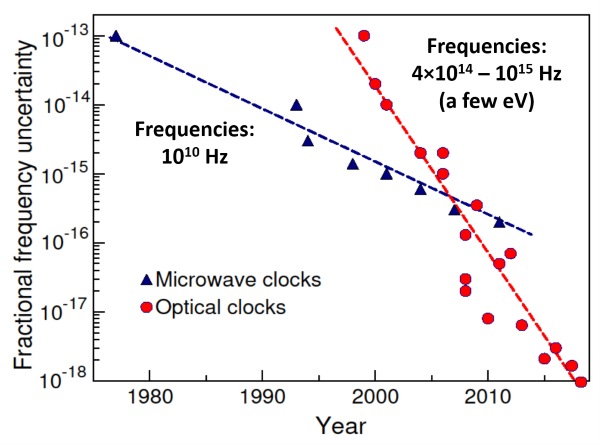
Evolution of fractional frequency uncertainties of atomic clocks based on microwave (Cs clocks) and optical transitions. Source: Rev. Mod. Phys. 90, 025008 (2018).
Development of atomic clocks is enabling transformational advances in areas including navigation, ultra-precise ranging, relativistic geodesy, dark matter searches, tests of the constancy of the fundamental constants, local position invariance, and the Lorentz invariance, tests of general relativity and gravitational wave detection in wavelength ranges inaccessible on Earth.
Applications of atomic clocks
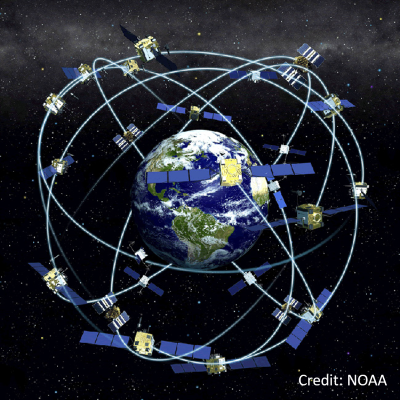
GPS
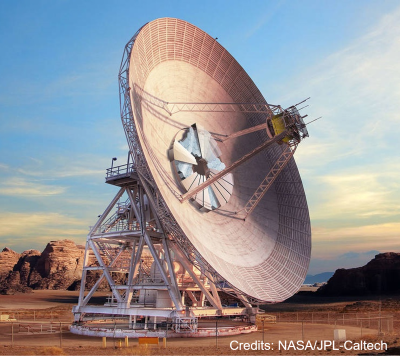
One-way deep space navigation
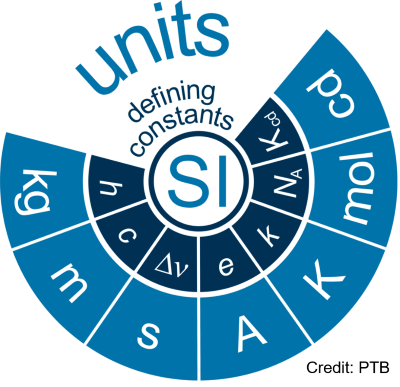
Definition of the second
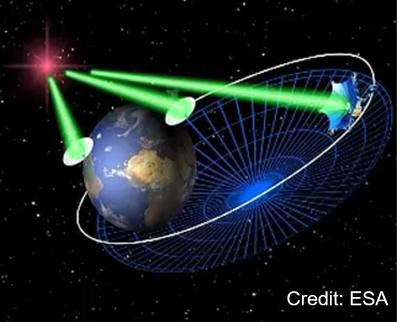
Very Long Baseline Interferometry
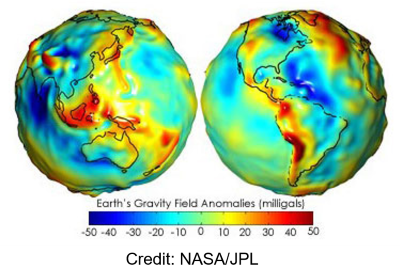
Relativistic geodesy
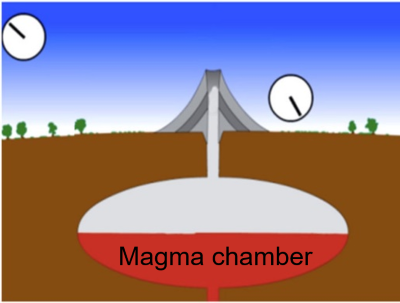
Gravity sensing
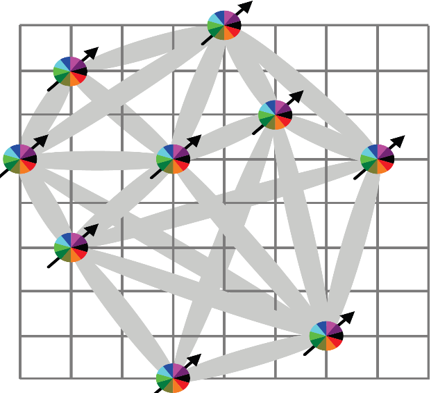
Quantum simulations
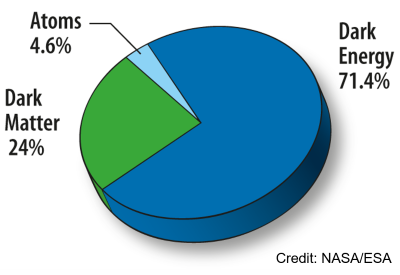
Dark matter searches
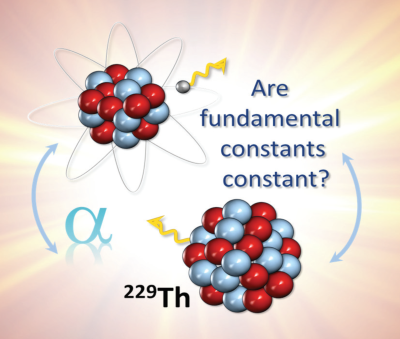
Search for variation of fundamental constants
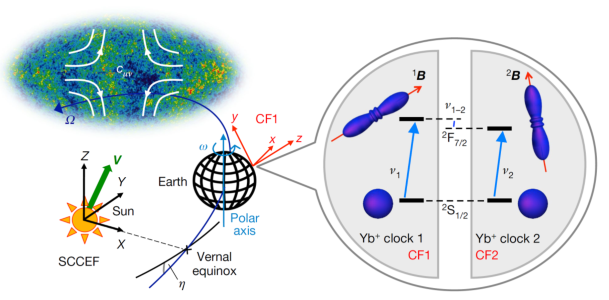
Search for the violation of Lorentz invariance
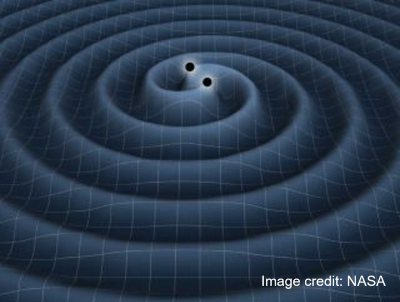
Detecting gravitational waves
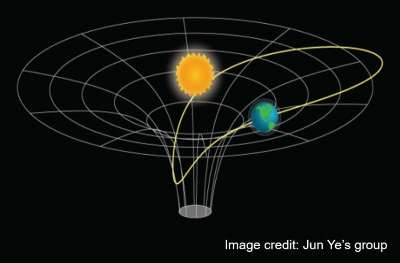
Search for violation of local position invariance
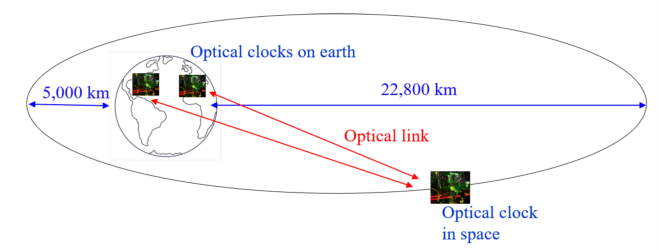
Tests of gravity
Research directions
The remarkable progress in the development of the optical atomic clocks and their many applications poses the following questions that our team and collaborators are working on:
(1) What are the roadblocks toward further significant improvements of the current clocks and how to overcome them?
(2) Are there other systems that may serve as the basis for the development of frequency standards that may exceed current clocks in their ultimate performance?
(3) Are there other atomic systems that have much higher sensitivities to new physics and can be used to develop high-precision clocks?
(4) Are there other systems that may be comparable to current clocks in the ultimate performance but may be operated with simpler experimental set ups?
We work on novel clock proposals, theoretical research aimed at improving the currently operating clocks, and many applications of atomic clocks.
Recent research highlights
Oscillating nuclear charge radii as sensors for ultralight dark matter
It was previously assumed that ratios of optical clock frequencies are only sensitive to the variation of the fine-structure constant, enabling searches for ultralight dark matter (UDM) that couples to the electromagnetic sector of the standard model. In this work, we show that there are additional observable effects due to coupling of UDM to quarks and gluons would lead to an oscillation of the nuclear charge radius detectible with optical clocks.
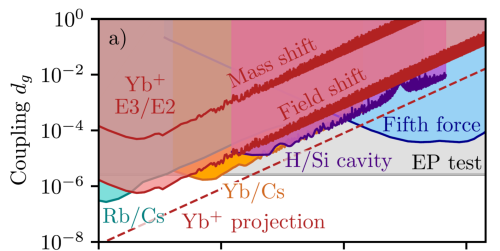
Exclusion plot for the linear scalar dark matter (DM) coupling to the gluons dg as a function of DM mass.
We show that coupling of ultralight dark matter (UDM) to quarks and gluons would lead to an oscillation of the nuclear charge radius for both the quantum chromodynamics (QCD) axion and scalar dark matter. Consequently, the resulting oscillation of electronic energy levels could be resolved with optical atomic clocks, and their comparisons can be used to investigate UDM-nuclear couplings, which were previously only accessible with other platforms.
We demonstrate this idea using the 2S1/2 (F=0) ↔ 2F7/2 (F=3) electric octupole and 2S1/2 (F=0) ↔ 2D3/2 (F=2) electric quadrupole transitions in 171Yb+. Based on the derived sensitivity coefficients for these two transitions and a long-term comparison of their frequencies using a single trapped 171Yb+ ion, we find bounds on the scalar UDM-nuclear couplings and the QCD axion decay constant. These results are at a similar level compared to the tightest spectroscopic limits, and future investigations, also with other optical clocks, promise significant improvements.
Oscillating nuclear charge radii as sensors for ultralight dark matter, Abhishek Banerjee, Dmitry Budker, Melina Filzinger, Nils Huntemann, Gil Paz, Gilad Perez, Sergey Porsev, Marianna Safronova, arXiv:2301.10784 (2023)
Prospects of a thousand-ion Sn2+ Coulomb-crystal clock
with sub-10−19 inaccuracy
Clocks based on one or a few trapped ions suffer from larger quantum projection noise than lattice clocks, but offer exquisite control of environmental perturbations and interactions, high-fidelity universal quantum control at the individual ion level, and a wide variety of ions to choose from with different sensitivities to environmental perturbations and proposed extensions of the Standard Model of particle physics.

Schematic of a many-ion optical atomic clock based on Sn2+ ions. A three-dimensional Coulomb crystal of 1000 Sn2+ ions (small dots) is conned in a linear RF Paul trap (grey cylindrical electrodes).
The challenge of three-dimensional Coulomb crystals of thousands of ions in linear RF Paul traps is a problem of micromotion: ions located off of the trap axis, along which the RF trapping electric field is zero, suffer from driven motion that leads to large time-dilation systematic frequency shifts.
We propose a many-ion optical atomic clock based on three-dimensional Coulomb crystals of order one thousand Sn2+ ions confined in a linear RF Paul trap as a candidate for a new metrological platform that offers the possibility of accuracy and precision better than any present-day optical lattice or single-ion clock. Beyond applications in timekeeping, this platform has the potential to find applications in relativistic geodesy, searches for physics beyond the Standard Model, and more.
TABLE I. Fractional systematic shifts and estimated uncertainties of a 1000 ion Sn2+ clock. operating at a magnetic field of 15 G in a room temperature ion trap with a blackbody radiation temperature of 300.0(5) K.
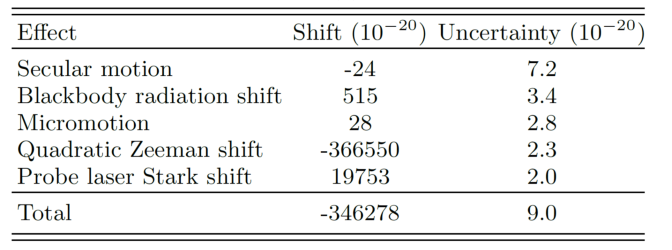
Sn2+ has a unique combination of features that is not available in previously considered ions: a 1S0 ↔ 3P0 clock transition between two states with zero electronic and nuclear angular momentum (I = J = F = 0) making it immune to nonscalar perturbations, a negative differential polarizability making it possible to operate the trap in a manner such that the two dominant shifts for three-dimensional ion crystals cancel each other, and a laser-accessible transition suitable for direct laser cooling and state readout.
Prospects of a thousand-ion Sn2+ Coulomb-crystal clock with sub-10−19 inaccuracy, David R. Leibrandt, Sergey G. Porsev, Charles Cheung, Marianna S. Safronova, arXiv:2205.15484 (2022).
Optical clocks based on highly charged ions
Crucial for applications of clocks in fundamental physics are a high sensitivity to effects beyond the Standard Model and Einstein’s Theory of Relativity and a small frequency uncertainty of the clock. Highly charged ions offer both. They have been proposed as highly accurate clocks, since they possess optical transitions which can be extremely narrow and less sensitive to external perturbations compared to current atomic clock species. The selection of highly charged ions in different charge states offers narrow transitions that are among the most sensitive ones for a change in the fine-structure constant and the electron-to-proton mass ratio, as well as other new physics effects. Recent advances in trapping and sympathetic cooling of highly charged ions will in the future enable high accuracy optical spectroscopy. Progress in calculating the properties of selected highly charged ions has allowed the evaluation of systematic shifts and the prediction of the sensitivity to the “new physics” effects.
- Measuring the stability of fundamental constants with a network of clocks, G. Barontini at al., EPJ Quantum Technology 9, 12 (2022).
- Optical clocks based on the Cf 15+ and Cf 17+ ions, S. G. Porsev, U. I. Safronova, M. S. Safronova, P. O. Schmidt, A. I. Bondarev, M. G. Kozlov, I. I. Tupitsyn, Phys. Rev. A 102, 012802 (2020).
- Accurate Prediction of Clock Transitions in a Highly Charged Ion with Complex Electronic Structure, C. Cheung, M. S. Safronova, S. G. Porsev, M. G. Kozlov, I. I. Tupitsyn, and A. I. Bondarev, Phys. Rev. Lett. 124, 163001 (2020).
- Highly charged ions: optical clocks and applications in fundamental physics, M. G. Kozlov, M. S. Safronova, J. R. Crespo López-Urrutia, P. O. Schmidt, Rev. Mod. Phys. 90, 45005 (2018).
Other relevant recent publications (2020-2022)
- Direct detection of ultralight dark matter bound to the Sun with space quantum sensors, Yu-Dai Tsai, Joshua Eby and Marianna S. Safronova, Nature Astronomy (2022)
- New Horizons: Scalar and Vector Ultralight Dark Matter, D. Antypas et al., arXiv:2203.14915 (2022).
- Snowmass 2021: Quantum Sensors for HEP Science – Interferometers, Mechanics, Traps, and Clocks, Oliver Buchmueller, Daniel Carney, Thomas Cecil, John Ellis, R. F. Garcia Ruiz, Andrew A. Geraci, David Hanneke, Jason Hogan, Nicholas R. Hutzler, Andrew Jayich, Shimon Kolkowitz, Gavin W. Morley, Holger Muller, Zachary Pagel, Christian Panda, Marianna S. Safronova, arXiv:2203.07250 (2022).
- Cold Atoms in Space: Community Workshop Summary and Proposed Road-Map, Ivan Alonso et al., EPJ Quantum Technol. 9, 30 (2022).
- Fundamental Physics with a State-of-the-Art Optical Clock in Space, Andrei Derevianko, Kurt Gibble, Leo Hollberg, Nathan R. Newbury, Chris Oates, Marianna S. Safronova, Laura C. Sinclair, Nan Yu, Quantum Sci. Technol. 7, 044002 (2022).
- Scalable codes for precision calculations of properties of complex atomic systems, C. Cheung, M. S. Safronova, S. G. Porsev, Symmetry 13 (4), 621 (2021).
- Precision measurement of the 3D1 and 3D2 quadrupole moments in Lu+, R. Kaewuam, T. R. Tan, Zhiqiang Zhang, K. J. Arnold, M. S. Safronova, M. D. Barrett, Phys. Rev. A 102, 042819 (2020).
- Hyperfine-mediated effects in a Lu+ optical clock, Zhiqiang Zhang, K. J. Arnold, R. Kaewuam, M. S. Safronova, M. D. Barrett, Phys. Rev. A 102, 052834 (2020).
- Probing the Relaxed Relaxion at the Luminosity and Precision Frontiers, Abhishek Banerjee, Hyungjin Kim, Oleksii Matsedonskyi, Gilad Perez, Marianna S. Safronova, J. High Energ. Phys. 2020, 153 (2020).
- Calculation of higher-order corrections to the light shift of the 5s2 1S0 – 5s5p 3P0 clock transition in Cd, S. G. Porsev and M. S. Safronova, Phys. Rev. A 102, 012811 (2020).

Supported by the Office of Naval Research
Development of novel clocks is supported by ONR Grants No. N00014-17-1-2252 and No. N00014-20-1-2513.
